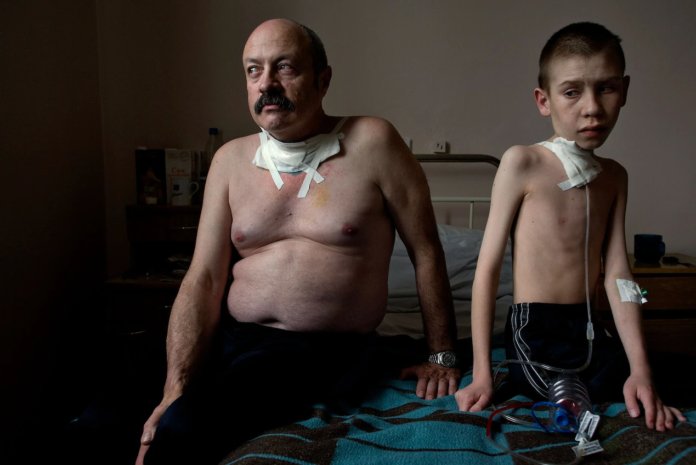
Researchers examining the effects of Chernobyl fallout discover that breaks in DNA increased the risk of thyroid cancer in people.
The radiation from the 1986 Chernobyl disaster spread hundreds of kilometres across Ukraine, Belarus, and the Russian Federation. The fallout led to the deposition of radioactive Iodine onto fields and pastures where cows grazed. Thus, resulting in the introduction of radiation within the population’s food supply through milk and greens. Ingestion of these contaminated products, especially during early childhood, led to the accumulation of radioactive iodine within their thyroids. Previous research has shown an increased risk of thyroid cancer among those exposed to the Chernobyl fallout. Moreover, thyroid cancer was the most frequent cancer observed following the incident. However, researchers have never conducted a molecular analysis of radiation-induced thyroid cancers or identified any specific biomarkers.
Now, a recently published study has provided further insight into the process of radiation-induced thyroid cancers.
The team of researchers analyzed blood and tissue samples from 440 Ukrainians with thyroid cancer. Out of these, 359 had estimated childhood exposure and developed cancer after the accident. On the other hand, 81 of the participants were from the same region but had no history of exposure and were born more than 9 months after the accident.
Moreover, the team only had thyroid radioactivity measurements for 52 study participants. Therefore, to estimate the radiation dose for others, they questioned the participants on their dietary habits and residential history at the time of the nuclear disaster.
This study represents the first time that we have linked such large-scale molecular pictures with very detailed exposure data
Lindsay Morton, lead author
No Biomarkers Discovered
Whole-genome sequencing revealed double-stranded DNA breaks within the tumor tissue samples. The higher the radiation dose, the more the tumor tissue contained these breaks. Moreover, results revealed higher incidence in those exposed at a younger age.
Generally, our cells try to fix such breaks in the DNA. However, at times there is an error in the repair, and it results in gene fusion. That is, the DNA ends up getting joined back at the wrong places. An abundance of such errors was present in the radiation-induced tumours but was rare in non-exposed people with thyroid cancer.
Our results point to DNA double-strand breaks as early carcinogenic events that subsequently enable PTC growth following environmental radiation exposure.
study authors
However, the researchers did not discover any radiation-specific biomarker that can help distinguish between thyroid cancers caused by different causes. The study highlights the effect of ionizing radiation on the general health of those affected. Previous research by the same team had also investigated the transgenerational effects of Chernobyl radiation.
Reference:
Morton, Lindsay M., et al. “Radiation-Related Genomic Profile of Papillary Thyroid Cancer after the Chernobyl Accident.” Science, 2021, doi:10.1126/science.abg2538.



